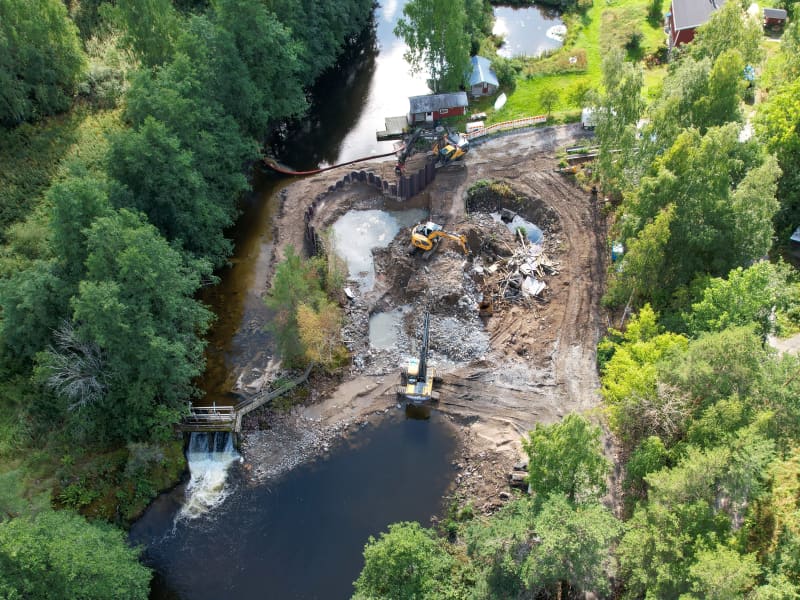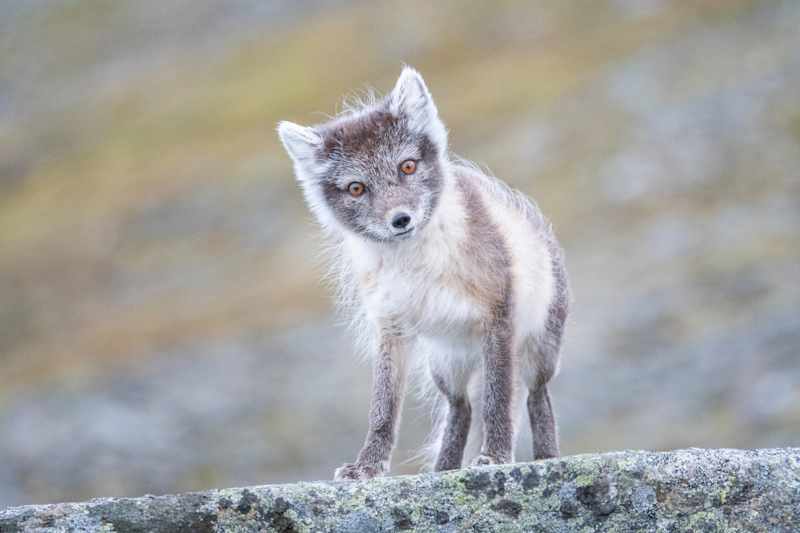However, the international average does not tell the whole story: In South America, populations have declined by more than 90% in some places. In Finland, species in freshwater ecosystems are particularly at risk.
The latest Living planet report from the environmental organisation WWF tells another sadly familiar story: the world’s nature is under threat, and the nature cover has shown little sign of abating since the report two years ago.
The report is based on the Living Planet Index, which looks at nearly 32,000 populations of 5,230 vertebrate animal species around the world.
This time, the Index is also significantly larger, with new research data added, especially from Brazil. There are now around 11 000 more populations covered than in the previous report.
The material includes mammals, birds, reptiles, amphibians and fish. In a way, vertebrates are only the tip of the iceberg of nature loss, but their role in most ecosystems is irreplaceable – and dwindling populations are a tangible sign of nature loss.

The more than 30,000 wild animal populations examined in the latest data have decreased by an average of 69 percent between 1970 and 2018.
– If, for example, the Dow Jones index dropped by 69 percent, economic actors would take really quick action. In the same way, really drastic measures should now be taken to stop the loss of nature.
The goal of the Living planet index is to use one number to describe the general trend of populations of vertebrate animal species. The percentage figure therefore looks at the general development of biodiversity, but does not tell directly about the decrease in the number of individual animals.
South America has the fastest loss of all
According to WWF, the calculation of the index has aimed for the best possible overall picture by weighting geographically, habitats and species groups.
Otherwise, for example, European or North American species that have been studied for a long time and extensively would perhaps receive too much weight.
In terms of wildlife loss, the most critical region is South America, where populations have decreased by an average of 94 percent during the approximately 50-year history of measurements.
According to the report, the biggest causes of nature loss are land use and overconsumption of natural resources. Especially logging in South America and the Amazon rainforest. The land is cleared for, among other things, the needs of agriculture and forestry and construction.

In Brasília, natural habitats are destroyed especially by the production of food that is also consumed worldwide.
Consumers around the world can unknowingly cause deforestation indirectly by, for example, drinking cocoa or coffee, eating food cooked in palm oil or meat fed with animal feed.
In September, the European Parliament approved its position on the Commission’s bill on the ban on the sale of deforestation products in the Union territory. The Parliament is now ready to start negotiations on the final form of the law with the EU member states.
However, Rohweder emphasizes that even in Europe, you can’t just look to distant South America – nature is getting poorer here too.
Finland’s migratory fish populations at risk
According to the Living Planet Index, populations in Europe and Central Asia have decreased by an average of 18 percent over the past five decades. Similarly, the drop has been more moderate in North America as well, where the trend has even reversed slightly in recent years.
According to Rohweder, however, this does not directly indicate that nature has not been impoverished in these areas as well. It has only started its impoverishment considerably before the beginning of the measurement history in the 1970s.
In fact, the index says that there are also wild animal populations in Finland, Europe and North America that are in very great danger on a global scale.

According to the WWF report, the biggest sufferers are freshwater vertebrates, whose population size index has decreased by an average of 83 percent worldwide between 1970 and 2018.
Domestic migratory fish salmon, trout, grayling, whitefish, whitefish, pikeperch, leatherback and eel are almost all endangered or to watch out for.
– Migratory fish depend on the fact that the stream waters are vital. The next government should also continue funding the removal of growth barriers, says Rohweder.
Rohweder is also concerned about the threat of domestic forest nature.
– Forest felling constantly exceeds the sustainable level. If we look at the species from there, then the common tit and the common tit have become endangered in recent years due to intensive forestry.

According to Rohweder, Finland needs to ensure sufficient measures to implement the EU’s biodiversity strategy.
The strategy obliges to protect 30 percent of land and sea areas and freshwater areas. In that case, 70 percent of the land area will still remain for economic use, but even then it would be good for forestry to take into account the impact of, for example, clear-cutting on nature.
According to Rohweder, it is especially important to protect old and natural state forests as soon as possible. Then they would already be in the bank when the implementation of the EU strategy begins.
– If the old and natural state forests were cut down now, it would take 500 years before we would have the same type of forests.
Looking towards Canada
The timing of the report’s publication is not a coincidence. In addition to EU decision-making, biodiversity can finally be decided at the highest level of international cooperation.
After years of teasing and disappointment, it now finally looks like the UN General Assembly on the Convention to Protect Biological Diversity will be held in Montreal in January.
The line of the EU and Finland at the meeting will be that the rest of the world must also commit to the 30 percent conservation goal.
According to WWF, at the UN Biodiversity Conference, member states must also commit to halve the footprint of production and consumption by 2030.
In international climate negotiations, according to the organization, it must be ensured that the necessary mitigation measures are widely implemented.
The Living planet report strongly underlines the importance of climate change for nature. According to the report’s assessment, warming will probably become the most significant driver of nature loss if the average temperature rise cannot be stopped below 1.5 degrees.

